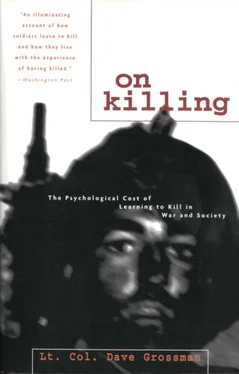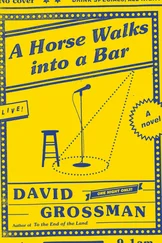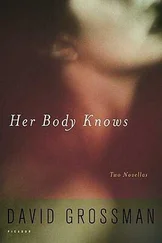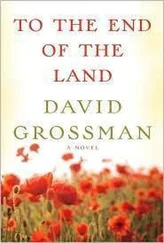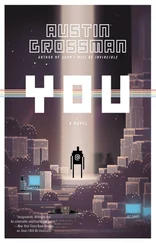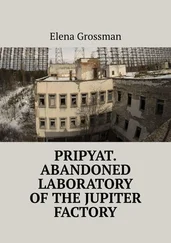Here too gain through illness has been used to explain the absence of psychiatric casualties during patrols behind enemy lines, and again it is demonstrably wrong. Aside from the fact that men in combat go mad regardless of whether or not it will do them any good, such soldiers have much to gain by becoming psychiatric casualties.
Patrols behind enemy lines are extraordinarily dangerous, and only one or two casualties (psychiatric or otherwise) en route can result in aborting the mission completely. Even if the mission is not aborted, the wounded and incapacitated can be spared much of the danger involved in a patrol by remaining at a secure location where rucksacks, rations, and equipment are kept under the guard of a few men while the mission is completed. Above all else, indications of psychiatric stress by a soldier on patrol would ensure that the soldier would not go on subsequent missions.
Soldiers on patrols behind enemy lines — like civilians suffering from strategic bombing, prisoners of war receiving artillery or bombs, and sailors in modern naval combat — generally do not suffer psychiatric stress because, for the most part, the element that is most responsible for causing combat stress is not present: they are not obligated to engage in face-to-face aggressive activities against the enemy. Even though these missions are highly dangerous, danger and the fear of death and injury are quite obviously not the predominant cause of psychiatric casualties in battle.
Fear among Medical Personnel:
“They Take Not Their Courage from Anger”
In a vision of the night I saw them,
In the battles of the night.
’Mid the roar and the reeling shadows of blood
They were moving like light…
With scrutiny calm, and with fingers
Patient as swift
They bind up the hurts and the pain-writhen
Bodies uplift…
But they take not their courage from anger
That blinds the hot being;
They take not their pity from weakness;
Tender, yet seeing…
They endure to have eyes of the watcher
In hell and not swerve
For an hour from the faith that they follow,
The light that they serve.
Man true to man, to his kindness
That overflows all,
To his spirit erect in the thunder
When all his forts fall, —
This light, in the tiger-mad welter,
They serve and they save.
What song shall be worthy to sing them —
Braver than the brave?
— Laurence Binyon, World War I veteran “The Healers”
There is a significant body of evidence that indicates that nonkilling military personnel on the battlefield suffer significantly fewer psychiatric casualties than those whose job it is to kill. Medical personnel in particular have traditionally been bulwarks of dependability and stability in combat.
Lord Moran, writing about his military experiences in Anatomy of Courage, is one of many such nonkillers who have recorded that they had never experienced the physical symptoms of fear. He experienced great emotional trauma and he felt that certifying his unit as fit, which was his responsibility, was “like signing the death warrant of two hundred men. And I might be wrong.” He concludes by saying that “even now after twenty years my conscience is troubled…. Was it right that I should hold such men to the trenches and if they were killed were they or I to blame?” Yet despite all his experiences, he marvels at his own ability to “stick” for so very long while the soldiers around him broke beneath the psychological burdens of combat. In Moran’s case he felt that his lack of psychiatric symptoms during his long years of continuous combat in the trenches of World War I was because, as a medical officer, looking after the wounded gave him something to do. This may be true, but perhaps a large part of the answer is that he simply was not obliged to kill.
The medic takes not his courage from anger. He runs the same or greater risks of death and injury, but he, or she, is given over on the battlefield not to Thanatos and anger, but to kindness and Eros. And when it comes to the psychological well-being of its avatar, Thanatos is a far harsher master, and whereas one World War I veteran-poet understood the nature of Eros on the battlefield and communicated it to us in “The Healers,” another understood and spoke of the nature of Thanatos on the painful field:
Efficient, thorough, strong, and brave — his vision is to kill.
Force is the hearthstone of his might, the pole-star of his will.
His forges glow malevolent: Their minions never tire
To deck the goddess of his lust whose twins are blood and fire.
— Robert Grant, World War I veteran “The Superman”
The psychological distinction between being a killer or a helper on the battlefield was clearly made by one remarkable veteran I interviewed. He had served as a sergeant in the 101st Airborne Division at Bastogne, was a Veterans of Foreign Wars post commander, and a highly respected member of his community. He seemed to be deeply troubled by his killing experiences, and after World War II he served in Korea and Vietnam as a medic on a U.S. Air Force air-rescue helicopter. His harrowing adventures rescuing and giving medical aid to downed pilots, he quite freely admitted, was a relief from, and a very powerful personal penance for, his relatively brief experience as a killer.
Here, the one-time killer became the archetypal medic, ministering to the wounded soldiers and carrying them off on his back. [10] It is important to note here that, although the lack of battlefield psychiatric casualties among medical personnel has held true in all wars about which I have data, Vietnam was very different in that the incidence of post-traumatic stress disorder appears to have been higher among medical personnel. I believe that this was due to the unique nature of what happened after the veteran returned from that war, and we will look at this in greater detail in the section “Killing in Vietnam.”
Very similar to the psychologically protected position of medics is the position of officers. Officers direct the killing but very seldom participate in it. They are buffered from the guilt of killing by the simple fact that they order it, and others carry it out. With the possible exception of rare self-defense situations, most officers in combat never fire a shot at the enemy. Indeed, it is a generally accepted tenet of modern warfare that if an officer is shooting at the enemy, he is not doing his job. And even though line-officer casualties in most wars are consistently much higher than those of their men (in World War I, 27 percent of the British officers who served on the western front were killed, compared with 12 percent of the men), their psychiatric casualties are usually significantly lower (in World War I, the probability of a British officer becoming a psychiatric casualty was half that of the men).
Many observers feel that the lower incidence of psychiatric casualties among officers is due to their greater sense of responsibility or the fact that they are highly visible, with greater social stigma associated with breakdown. Undoubtedly the officer has a greater understanding than his men of what is going on and his place and importance in it. And officers get more recognition and psychological support from military institutions, such as uniforms, awards, and decorations.
These factors are probably all part of the equation, but the officer also has a far smaller burden of individual responsibility for killing on the battlefield. The key difference is that he doesn’t have to do it personally.
Читать дальше
